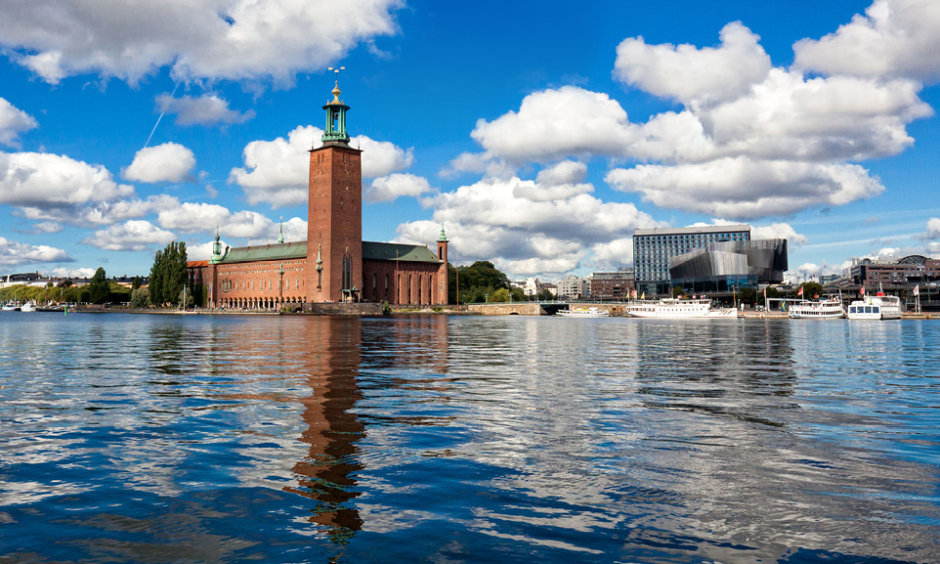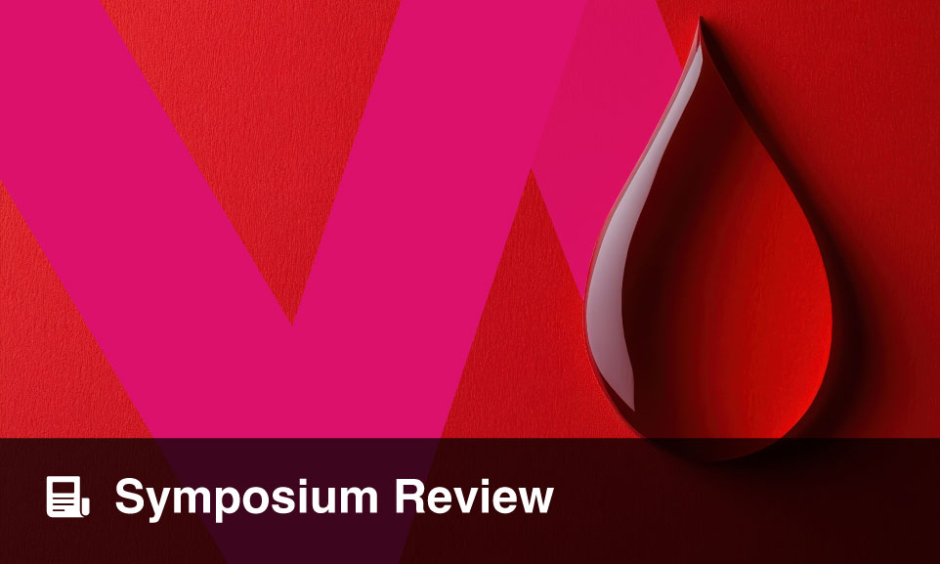Written by James Coker | Reporter, European Medical Journal | @EMJJamesCoker
![]()
The world-renowned Stockholmsmässan congress centre in Stockholm, Sweden, will host this year’s EHA Congress, which promises to be a particularly important event in the context of rapid advances taking place in the field of haematology. The wide-ranging scientific programme aims to update professionals from this and related therapeutic areas on new research and emerging techniques being developed for diagnosing and treating blood disorders. Additionally, plenty of networking opportunities with haematologists from around the world will be available throughout the 4-day event, which runs from 14th–17th June. To ensure the highlights are available to those who were unable to attend, as well as to participants who want a subsequent overview, the EMJ’s EHA 2018 congress review will be published in this year’s EMJ Hematology eJournal, which will be available as an open access publication on our website in August.
History of the Congress
The first ever Congress of the EHA took place from 3rd–5th June 1994 in Brussels, Belgium, around 2 and a half years following the creation of the EHA. The success of the congress meant it quickly became an annual affair from 1998, when it was held in Amsterdam, Netherlands, together with the International Society of Hematology’s (ISH) meeting of that year. Stockholm has frequently hosted the EHA Congress, with this year being the third occasion the city has done so; the previous two occasions were in the years 2005 and 2013.1
Interesting Fact
EHA was founded in December 1991 in Brussels. Originally, ‘Hematology’ in the title was spelt in the British–English way of ‘Haematology’.2
Last Time Out
During 4 days from 22nd–25th June 2017, nearly 11,000 delegates the world over descended into Madrid, Spain for the 22nd Congress of the EHA. Here, a record number of abstracts were submitted, totalling 2,500, and a number of hugely important studies were presented. These included: research showing how common infections may play an important part in acute leukaemia onset, which displayed the potential to create novel approaches for preventing the condition; an analysis of the benefits and risks of treating venous thromboembolism (VTE) in cancer patients; as well as a plethora of trials assessing the efficacy of new treatments for conditions like non-Hodgkin lymphoma, sickle cell disease, and leukaemia. All of this and more was outlined in our review of the congress in last year’s EMJ Hematology journal, which can be accessed here.
Important Timings
Following the success of its inaugural edition last year, the YoungEHA Research Meeting will take place at the Stockholmsmässan congress centre from 08.45–18.00 on Thursday 14th June; Day 1 of the event. Designed for PhD students, post-docs, and early career researchers with an interest in basic and translational research in haematology, the programme will cover areas ranging from cellular immunotherapy and immune cells to haematopoietic stem cell biology.
The always-entertaining Opening Ceremony will take place in Room A1 on Friday 15th June from 13.00–14.30. This will include an opening address by EHA President Prof Pieter Sonneveld as well as the annual Award Ceremony, where individuals who have distinguished themselves in the field will be recognised for their achievements. The Presidential Symposium will then be held later on the same day, again in Room A1, from 15.45–17.15, and feature addresses from Prof Sonneveld and Prof Martina Muckenthaler, Secretary of the EHA. The exhibition hall, which will provide delegates with the opportunity to check out the latest products and devices from pharmaceutical and diagnostic companies, in addition to stands from non-profit societies, will be open throughout the 4 days. Another component of this years’ congress is a 5 km fun run, starting bright and early on Saturday 16th June, from 06.45–08.00. The start and finish lanes will be located in the large field next to the tennis court by Haga Forum in Hagaparken.3
Hot Topics
The scientific programme is comprised of a number of different categories, which include the following: Advocacy Track; Benign haematology; Biology; Clinical; General skills; Haemoglobinopathies; Immunotherapy; Laboratory diagnosis; Lymphoid malignancies and plasma cell disorders; Myeloid malignancies; Paediatrics; Stem cell transplantation and special therapy; Thrombosis and haemostasis; Transfusion medicine; Translational; and YoungEHA track. Within these will be sessions covering new treatment and diagnostic approaches for all haematological and comorbid conditions.
Social Media
Delegates should follow the official EHA twitter account for updates throughout the event: @EHA_Hematology. Their Facebook page should also be checked frequently, and this can be found at: https://en-gb.facebook.com/EuropeanHematologyAssociation/
Additionally, the EMJ accounts of @EMJReviews and @EMJHematology will provide constant analyses of everything that goes on as our team members gather the information they need to produce our in-depth congress review shortly afterwards.
The official congress social media hashtag is #EHA23.
History of the City
Stockholm was believed to have been founded some time during the 13th Century by Birger Jarl, whose main aim was to block off the water passage between Lake Mälaren and the Baltic. Within 100 years it had become the largest settlement in Sweden.4 Stockholm was at the heart of a major event in 1520, which heavily contributed to the end of the Kalmar Union, a political agreement bringing together the nations of Denmark, Norway, and Sweden under the rule of a single Monarch from 1397. This event is referred to as the ‘Stockholm Bloodbath’, in which 80 Swedish nobles were executed by the orders of the Danish union king, Kristian II after years of internal conflicts. This act was the catalyst for a rebellion which deposed Kristian II, ultimately ending the union in 1523 when Gustav Visa was elected King of the newly independent Sweden.5 After the devastation caused by the Great Northern War (1700–21) and the Black Death during the 18th Century, Stockholm was rebuilt and experienced an unprecedented population growth. It is now renowned as a vibrant and attractive destination for tourists and is home to over 1 million people.6
Places to Visit
There are numerous fascinating and beautiful places to visit in Stockholm; here are just three to consider during your stay:
Ekopark: This Royal National City Park covers an area the size 26 km2, encompassing a unique blend of nature and culture at the very heart of the city.7
Archipelago: If you have time, exploring the archipelago is an experience like none other, with 30,000 islands, islets, and rocks, each with their own distinct flavour, beginning just minutes away from Stockholm.8
The Royal Palace: Open to the general public, the Royal Palace is the official residence of the King of Sweden, offering 5 museums that provide visitors with details of the long and eventful history of the Swedish Monarchy.9
Here at the EMJ, we cannot wait to attend this year’s EHA congress, and observe and engage in the extensive sessions that are due to take place. We’ll be very active throughout, so come and have a chat if you see us around the Stockholmsmässan congress centre!
REFERENCES
- European Hematology Association. Congress: Past. Available at: https://ehaweb.org/congress/previous-congresses/. Last accessed: 17 May 2018.
- Union of International Associations. European Hematology Association (EHA). Available at: https://uia.org/s/or/en/1100008671. Last accessed: 17 May 2018.
- European Hematology Association. 23rd Congress of EHA. Available at: https://ehaweb.org/congress/23rd-c/key-information/. Last accessed: 17 May 2018.
- Andersson E. A Brief History of Stockholm. Available at: https://philip.greenspun.com/sweden/stockholm/history. Last accessed: 17 May 2018.
- Sweden. History of Sweden. Available at: https://sweden.se/society/history-of-sweden/. Last accessed: 17 May 2018.
- Scandinavian Airlines System. History of Stockholm. Available at: https://www.flysas.com/us/Destinations/stockholm/history/. Last accessed: 17 May 2018.
- Ekoparken. Welcome to our web-site of the Ekopark – The Royal National City Park. Available at: http://www.ekoparken.org/9engelska/englishstart.htm. Last accessed: 17 May 2018.
- Stockholm Archipelago. Welcome to the archipelago! Available at: https://www.stockholmarchipelago.se/en/. Last accessed: 17 May 2018.
- Visit Stockholm. The Royal Palace. Available at: https://www.visitstockholm.com/see–do/attractions/the-royal-palace/. Last accessed: 17 May 2018.







